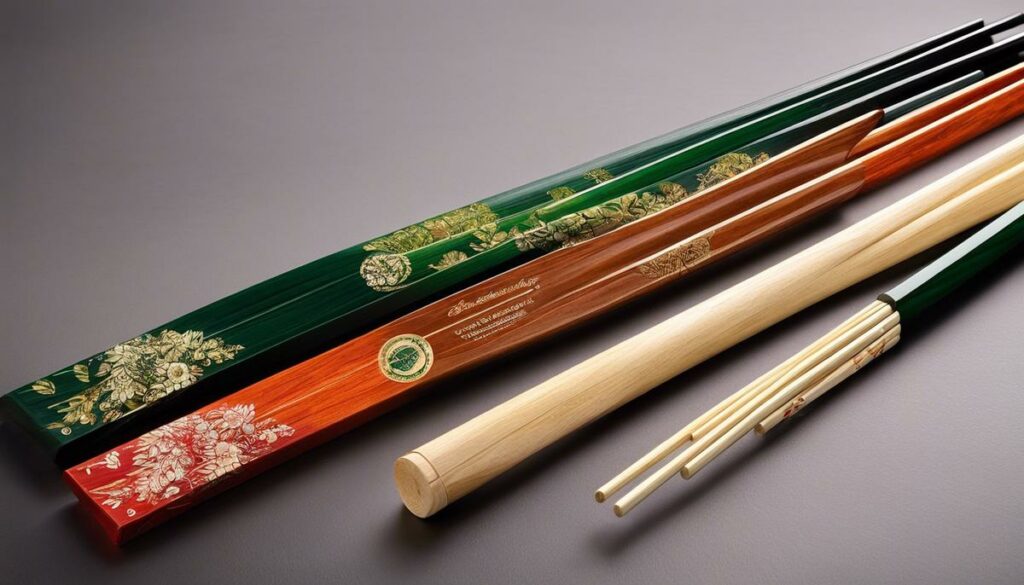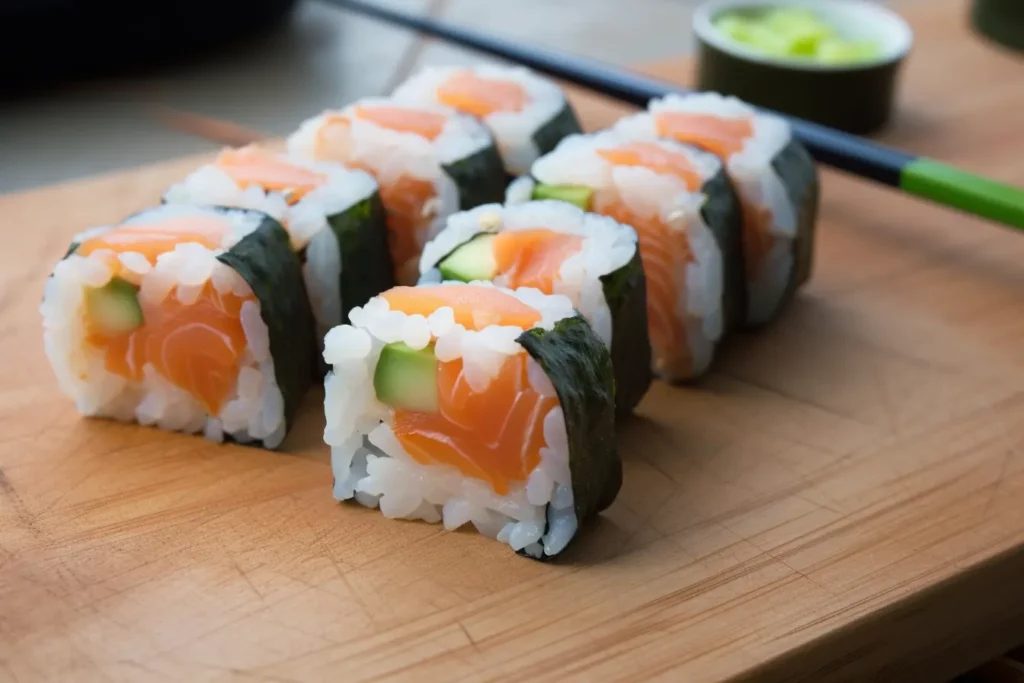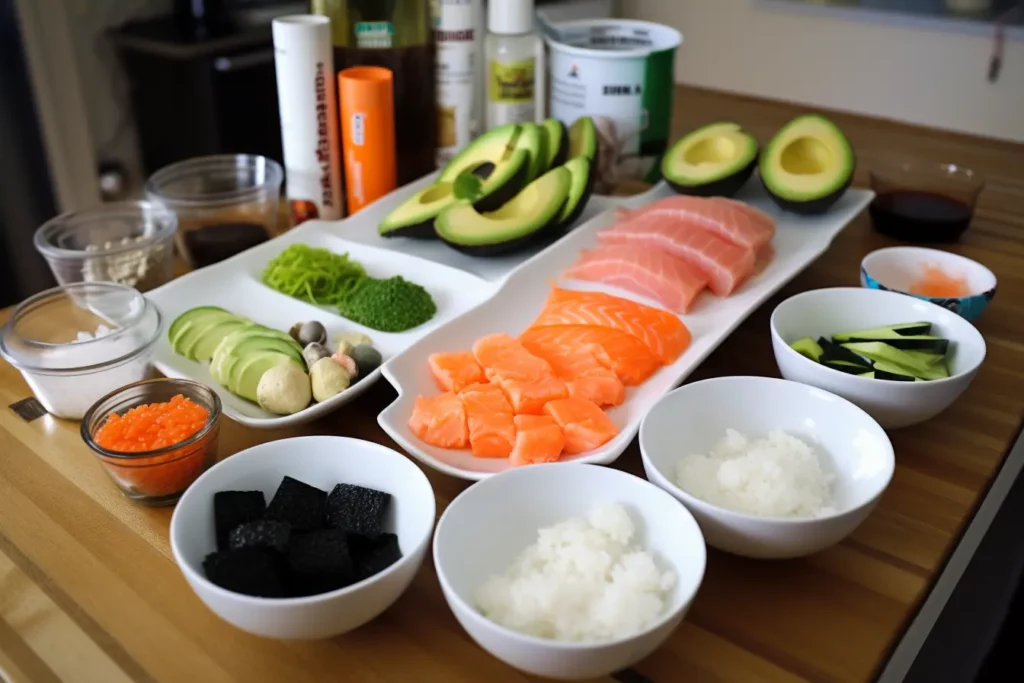Japanese chopsticks, a proud expression of Japan’s cultural heritage, are currently undergoing a remarkable transformation. Modernization and innovation have meant that these traditional eating tools operate far beyond their original function and evolve into a hidden realm of design art, technology, and sustainable practices. At the same time, they have managed to preserve their roots in Japanese culture and history. Interestingly, this development not only reflects the changes in the world of Japanese chopsticks, but also testifies to the profound social, technological and environmental changes.
Environmentally friendly integration
When we talk about design, we rarely refer to chopsticks. But they are not just simple tools, but also a culture of expression and traditional craftsmanship. In the modern world, however, we need more than just aesthetically pleasing chopsticks – we need an eco-friendly solution. This is where the new innovations in the design of eco-friendly, traditional Japanese chopsticks enter the stage.
The traditional chopsticks from Japan, also known as hashi, are a basic kitchen utensil used throughout the country. Traditionally made of bamboo or wood, they are an important part of Japanese food culture. But in our modern times, where sustainability has become a key word, even these traditional chopsticks are on the verge of a green revolution.
Thanks to rising awareness of environmental issues, biodegradable and reusable chopsticks are now on the rise. They reduce waste and conserve our natural resources without sacrificing design and aesthetics. A perfect example of this is chopsticks made from recycled plastic or stainless steel, which are a stylish and sustainable alternative to the traditional chopsticks.
But it’s not just the materials that are changing. The manufacturing processes are also adapted to the needs of our nature. For example, the use of toxins or unnecessary chemicals has been abandoned. In addition, many manufacturers strive for responsible forest management and only use wood from sustainable cultivation.
So, the traditional Japanese chopstick is undergoing a transformation towards more eco-friendly design. It shows us that aesthetics and sustainability can go hand in hand and makes us aware that even the smallest things in our everyday lives have an impact on our environment.
And that’s further proof that we can make environmentally conscious choices in every facet of our lifestyles. From the dining room to the wardrobe, from the shoes we wear to the chopsticks we use. It’s not just big gestures that count, but also the small efforts that help make our world greener and more sustainable. It is, after all, the world we live in, and we all have a role to play in preserving it.

Multifunctional chopsticks
The versatility of today’s Japanese chopsticks brings interesting design and use possibilities. For the style-conscious, eco-friendly consumer, they provide more than just a means of eating. Style and sustainability go hand in hand, but how has the growing multifunctionality shaped these everyday objects?
The popularity of chopsticks, which are both useful and aesthetically pleasing, has increased in recent years. Designers manage to turn this everyday item into a fashion statement without sacrificing functionality. From the minimalist, simple shapes to the ornate, detailed designs, the choice is huge, giving everyone the opportunity to find and accentuate their own style.
Sustainable materials such as bamboo or other fast-growing wood not only bring closeness to nature and simplicity into everyday life, but also help to reduce our ecological footprint. Modern, sustainable and chic – a perfect combination.
In addition to appearance, the handling of the chopsticks is also important. Shapes, lengths and materials are as versatile as the users themselves. Curved shapes, non-slip surfaces and ergonomic design make it easy and comfortable to use. This makes eating not only a pleasure, but also an experience.
So how does the increased multifunctionality influence the design and use? One thing is clear: it offers scope for innovation and creative solutions. Think, for example, of chopsticks with built-in cutlery or those that can also serve as cooking utensils. The more features, the more practical and desirable they become.
But beware: don’t be blinded by trends and don’t forget the functional aspect. After all, the chic cover should also contain a reliable, comfortable everyday object.
Let’s celebrate this piece of tradition by combining awareness, responsibility and style. However, whether multifunctional or traditional, each pair of Japanese chopsticks has its own story to tell, which is inscribed in every bite we take.

Luxury and personalized chopsticks
It doesn’t always take style and elegance to enjoy the luxury of upscale dining. The focus is now on aesthetics, individuality and, of course, sustainability. Current trends around Japanese chopsticks put these elements in the foreground.
In our image-driven world, more and more emphasis is placed on appearances. You eat with your eyes, a common expression that points to the importance of aesthetically pleasing chopsticks. Small details, such as the right texture and color, can enhance a meal and intensify the dining experience.
The design of chopsticks is also becoming more versatile, with a wide range of styles, materials, and patterns to meet everyone’s individual preferences and needs. Whether it’s colorful motifs, minimalist designs, or even personalized engravings, it’s clear that individuality plays a huge role in the design and selection of chopsticks.
However, there is a balance to be struck where style and sustainability meet. More than ever, people are focusing not only on appearance, but also on environmental sustainability. Bamboo and other sustainable materials are playing a growing role. They offer an environmentally friendly alternative and contribute to the reduction of plastic in the environment.
Handling also plays a crucial role. A chopstick that is too heavy or poorly balanced can interfere with the eating experience. This is where design and ergonomics come into play, allowing for a comfortable yet stylish dining experience.
Nowadays, chopsticks can do more than just grab and absorb food. Multifunctionality is on the rise, with models that offer additional features such as spoon or fork.
However, on the way to more style and individuality, tradition must not be forgotten. The preservation of culture and tradition also ensures an awareness and appreciation of the art form behind Japanese chopsticks.
Ultimately, it is the combination of comfort, quality, style and sustainability that makes up luxury and value at the same time. It is a familiar object that we interact with in our everyday lives, and at the same time reminds us of the importance of responsibility and living in style. Chopsticks are more than just a tool. They are a symbolic element of our lifestyle and our responsibility towards our environment.

Pop Culture Influences
It’s no secret that pop culture has a huge impact on the way we live – from fashion to eating habits. And of course, Japanese chopsticks are no exception. These impressive utensils form an important part of Japanese food culture and have evolved significantly over time.
Nowadays, the ubiquitous pop culture is influencing the trends and changes in Japanese chopsticks. The fact that celebrities and well-known brands use chopsticks and even create their own designs adds to the appeal and popularity of these utensils. They act as fashionable and forward-thinking symbols that are both stylish and practical.
The versatility and personalization of chopsticks is also an important feature that has influenced pop culture. Today, we have an incredible range of design options to choose from – from simple and minimalist to bold and expressive to express the user’s individuality.
But it’s not just aesthetics that’s important. Incorporating sustainability into chopstick design is also a crucial aspect. In view of the increasing demand for environmentally friendly solutions, materials such as bamboo are becoming more and more common. Bamboo is not only sustainable and environmentally friendly, but also extremely durable and comfortable to handle.
Ergonomics plays an important role in the design of chopsticks. Finding a balance between style and comfort is crucial. Thanks to new technologies and innovations, chopsticks can now be designed to be multifunctional to meet different needs while providing an aesthetically pleasing design.
Chopsticks are more than just cutlery. They are a representation of our culture, our style and our awareness of the environment. By celebrating tradition and making a conscious choice for quality, style and sustainability, we can help ensure that chopsticks remain an integral part of our lifestyle in the future.

The observed trends suggest that the future of Japanese chopsticks is interesting and promising, taking into account the challenges of environmental protection and technological progress, as well as the desire for individual self-expression and luxury. While chopsticks continue to serve their traditional purpose, the continuous development and adaptation to the changing trends and needs shows that Japanese chopsticks are more than mere eating tools. They are reflections of society, reflecting the current cultural, ecological and technological status quo while pointing to the future.


